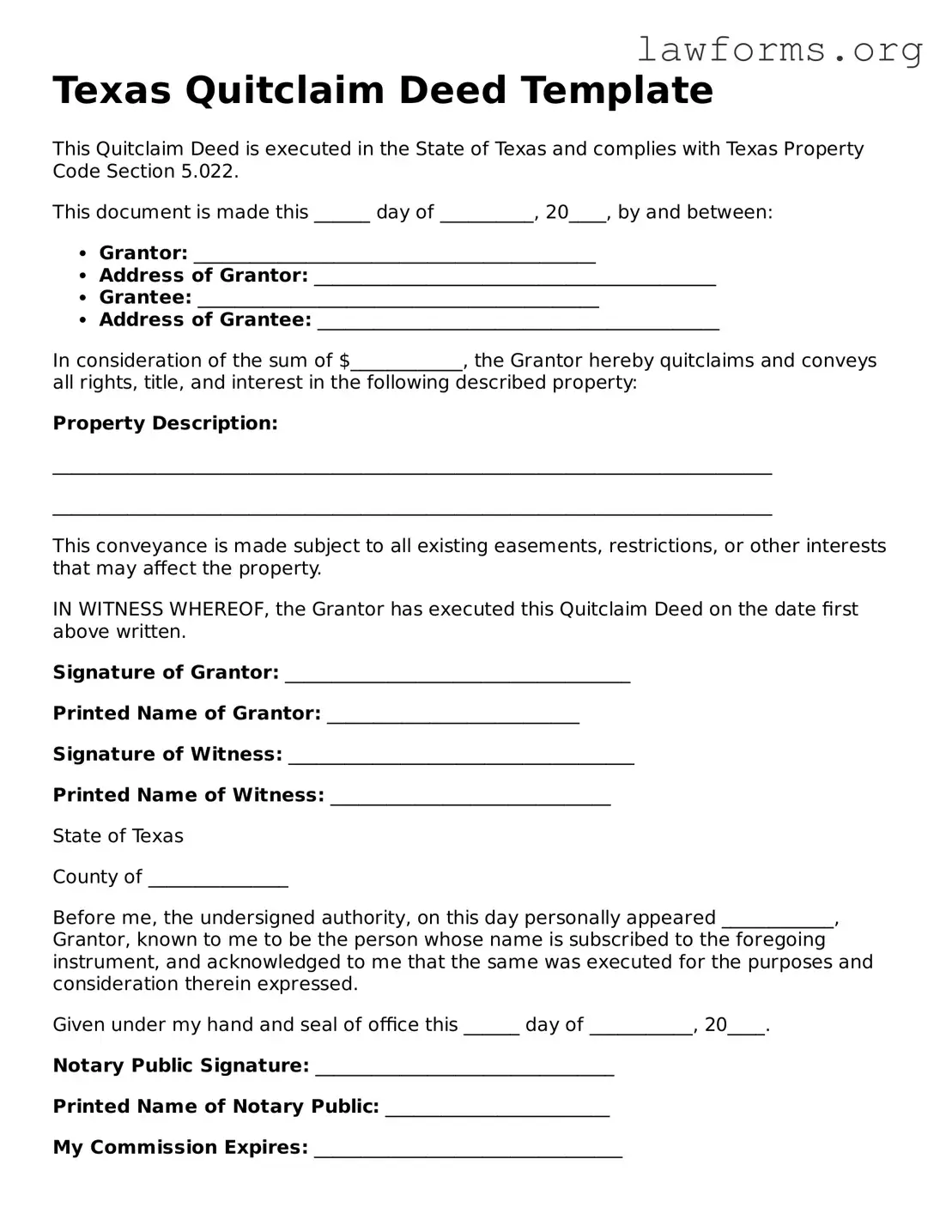Texas Quitclaim Deed Template
This Quitclaim Deed is executed in the State of Texas and complies with Texas Property Code Section 5.022.
This document is made this ______ day of __________, 20____, by and between:
- Grantor: ___________________________________________
- Address of Grantor: ___________________________________________
- Grantee: ___________________________________________
- Address of Grantee: ___________________________________________
In consideration of the sum of $____________, the Grantor hereby quitclaims and conveys all rights, title, and interest in the following described property:
Property Description:
_____________________________________________________________________________
_____________________________________________________________________________
This conveyance is made subject to all existing easements, restrictions, or other interests that may affect the property.
IN WITNESS WHEREOF, the Grantor has executed this Quitclaim Deed on the date first above written.
Signature of Grantor: _____________________________________
Printed Name of Grantor: ___________________________
Signature of Witness: _____________________________________
Printed Name of Witness: ______________________________
State of Texas
County of _______________
Before me, the undersigned authority, on this day personally appeared ____________, Grantor, known to me to be the person whose name is subscribed to the foregoing instrument, and acknowledged to me that the same was executed for the purposes and consideration therein expressed.
Given under my hand and seal of office this ______ day of ___________, 20____.
Notary Public Signature: ________________________________
Printed Name of Notary Public: ________________________
My Commission Expires: _________________________________
